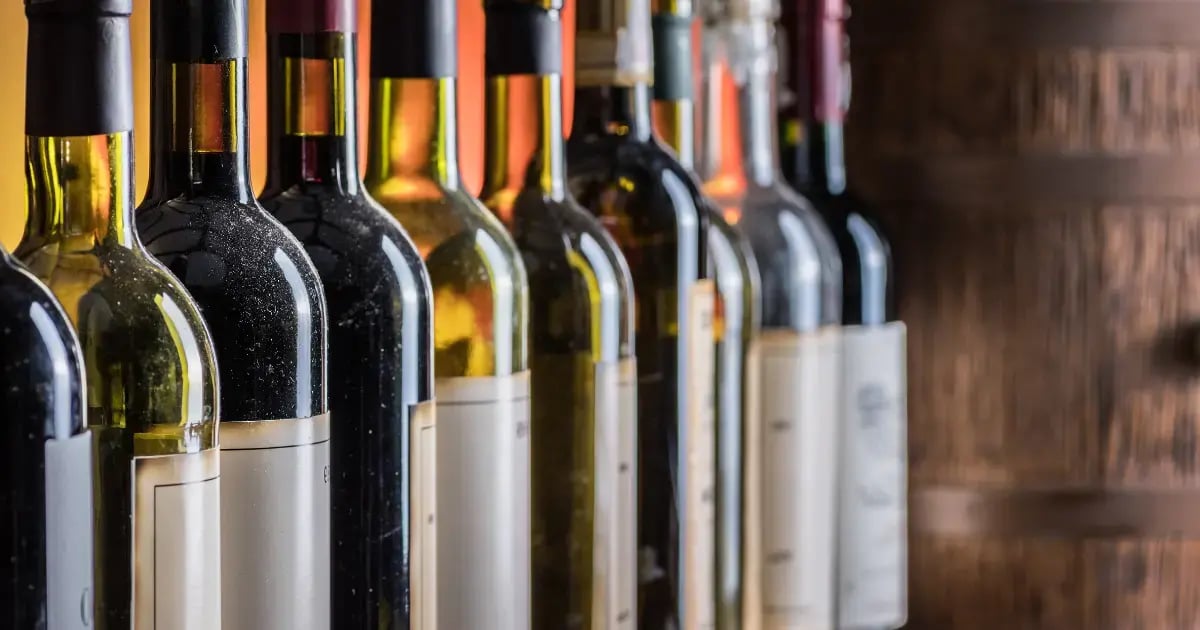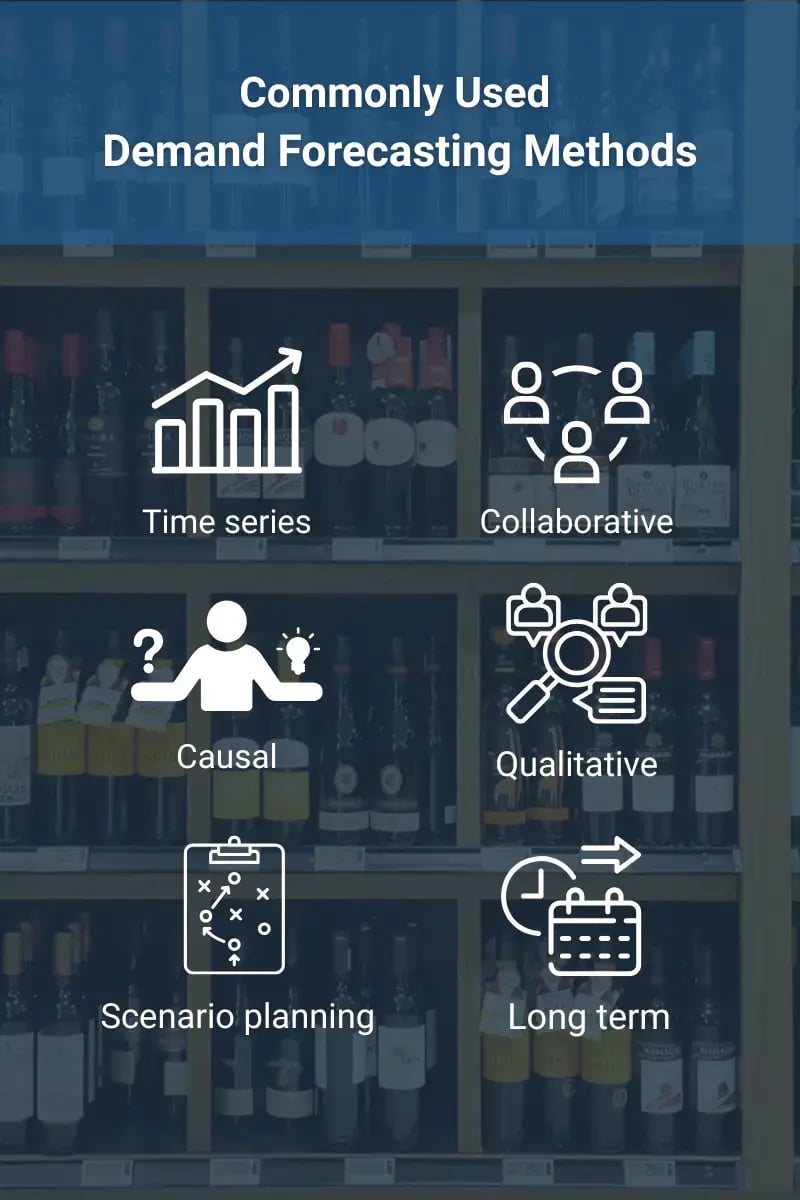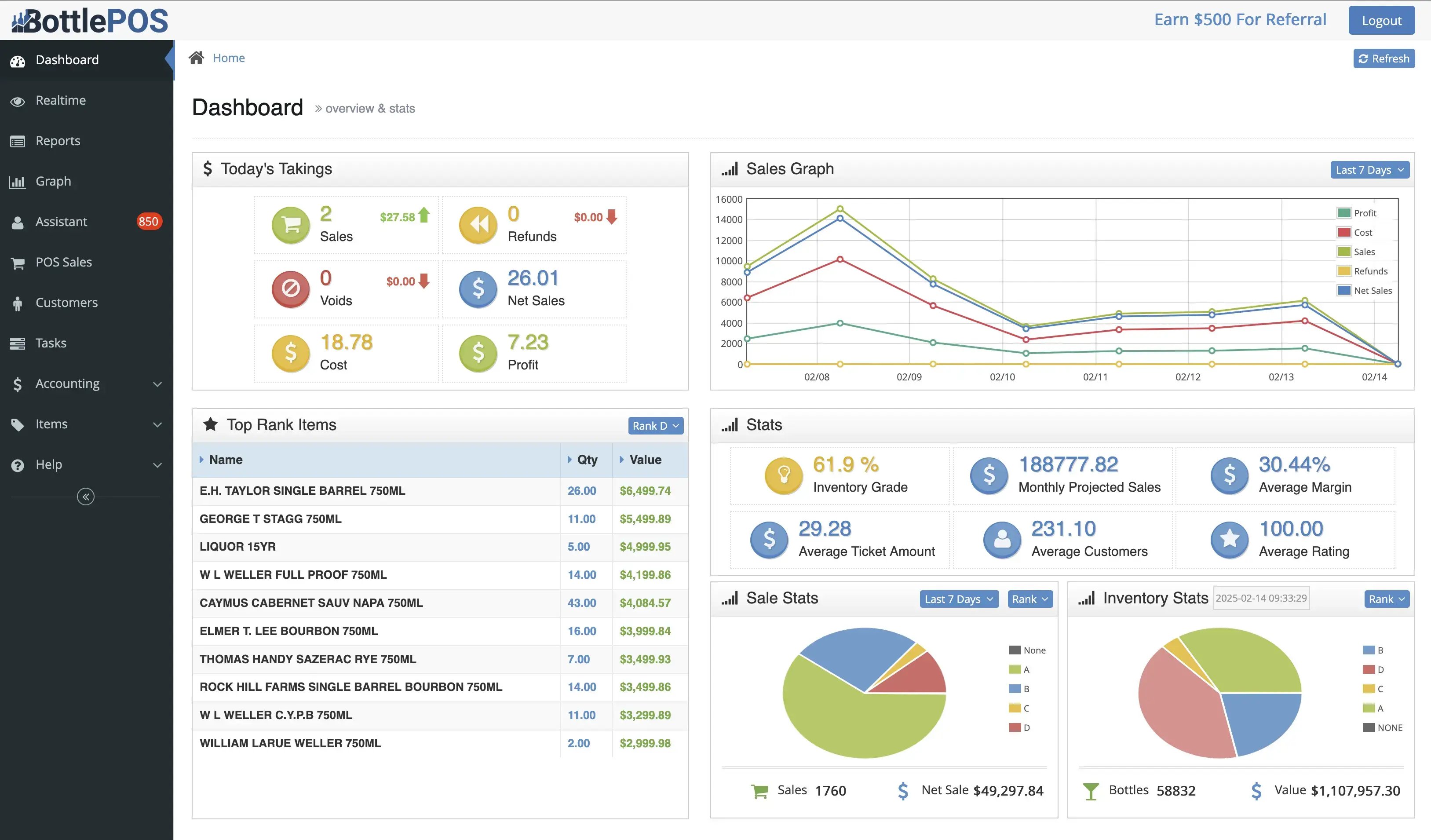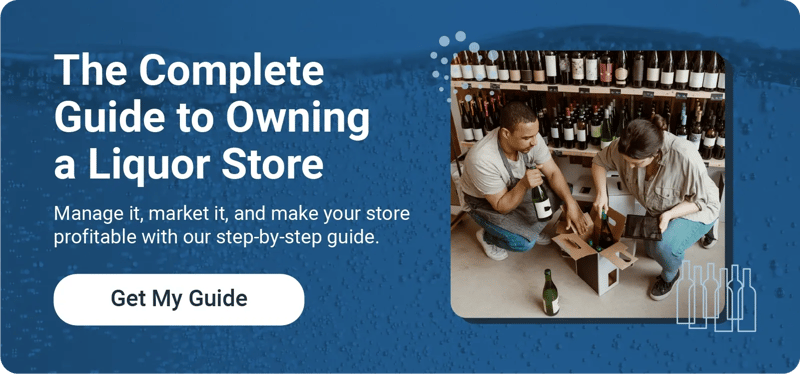From the outside it might seem easy, but liquor store owners know that one of the hardest aspects of running a liquor store is keeping the shelves stocked.
To keep costs down, you need to know what your customers want, order the right amounts, and anticipate when they’re going to need it. But between sudden shifts in demand, new industry trends, and seasonal shifts, finding the right balance can be tricky.
That’s why liquor store inventory forecasting is so important. Combining an understanding of your customers and the data on your point of sale (POS), you’ll be equipped to optimize your inventory and proactively prepare for swings in demand.
What Is Liquor Store Inventory Forecasting?

Inventory forecasting (a.k.a. demand forecasting) is a technique that combines historical sales data and other information to predict future customer demand for certain products.
Some of the external factors that affect demand forecasting include:
- Seasons
- Holidays and events (e.g. Super Bowl weekend, Kentucky Derby, Christmas)
- Times and days of the week
- Weather
- Competitor sales and events
- Upcoming sales and promotions
- New bottle releases
Inventory forecasting helps prepare your package store against surges in demand by finding trends and patterns in your sales data.
Benefits of Effective Inventory Forecasting
Sometimes a sudden surge in demand takes you by surprise. Suddenly, you’re racing to restock your shelves — then, by the time you’ve recovered, it’s too late and you’re overstocked.
Good inventory forecasting prevents this. Inventory forecasting isn’t a magic crystal ball that anticipates every single demand swing, but even basic forecasting can help liquor stores:
- Prevent stockouts or overstocking.
- Improve decision-making and merchandise planning.
- Refine sales and promotion strategy.
- Reduce monthly inventory costs.
- Create action plans for unexpected events.
- Understand customer preferences.
If you still feel intimidated, don’t be. Even without a formal system, you likely already instinctively do some basic inventory forecasting already (e.g. knowing to stock up on beer before weekends or popular red wines around Thanksgiving).
A good inventory forecasting system simply supports those instincts with data to help you catch patterns you might otherwise miss.
Top Liquor Inventory Forecasting Methods
There are six common methods for forecasting inventory demand in retail.

Let’s go into more detail about each method:
- Time series analysis uses historical sales data to find repeatable patterns in demand and is usually used to monitor times with predictable demand fluctuations, like holidays, game days, or events.
- Collaborative analysis is when you share your sales data and forecasts with suppliers to improve your stock management. It’s especially helpful if you have close relationships with local breweries or distilleries to anticipate demand.
- Causal forecasting looks at the relationship between your sales and price changes, promotional events, layout changes, and other specific factors. It’s typically used to monitor the effectiveness of layout changes, sales, weather forecasts, and other events.
- Scenario planning looks to get ahead of disruptions caused by bad weather, tariffs, or demographic changes by creating detailed action plans.
- Qualitative forecasting uses customer feedback, surveys, and staying apprised of industry trends instead of hard data to estimate demand. This method is usually used when you have limited historical data or there’s a spike in demand you can’t account for through other methods.
- Long-term forecasting is similar to time series analysis and attempts to uncover recurring seasonal trends over a longer period. It’s also used to predict how your overall growth will affect your inventory needs.
There’s no one “right” forecasting method. Which ones you use will depend on your experience, your needs, and the technology available to you.
Liquor Store Demand Forecasting: 6 Pro Tips
Forecasting inventory for your liquor store might feel overwhelming at first — but by following these six pro tips, you’ll reap the benefits in no time.
1. Leverage Modern Inventory Software
Trying to plan your inventory without a holistic view is like planning a trip without a map. Liquor stores that still rely mostly on instinct for their inventory planning often find it’s pretty hit and miss.
If you’re still using manual inventory tracking, it’s hard to proactively address inventory needs. Often, even store owners who already have a modern liquor POS system don’t take full advantage of its built-in inventory management software.

The inventory management functions on your POS system will:
- Update inventory levels in real time when you make sales or receive an invoice.
- Track sales data, inventory turnover, and other metrics for reporting.
- Manage reorders and store supplier information (lead times, etc.).
Put another way, you don’t actually have to do anything to get the data you need for inventory forecasting — the POS collects and contextualizes your data for you. All you have to do is use it.
Your POS system will then use that data to generate reports and dashboards, which you can use to spot trends in your sales data without having to manually aggregate data and crunch numbers.
2. Know Your Customers
There’s no universal formula for what’s popular and what’s not. Demand in your store will be unique because of your customers and niche.
Use your sales reports and do some research in your local area to look into:
- Bestselling products and categories: Know which products your customers gravitate toward the most, so you can prioritize which products to monitor most closely.
- Underperforming products: See if slow-moving products are consistently underperforming or simply changing in popularity between different seasons.
- Loyalty data: Use sales history from your customer loyalty program to see which items your best customers gravitate toward.
- Competitor pricing: Find out if the sales performance of your products is linked to your competitors’ pricing and promotional strategies.
All of this helps paint a picture of the specific items your customers want to buy.

3. Stay Current on Liquor Industry Trends
Of course, not all trends are dictated on the local level. The liquor industry as a whole changes over the years (e.g. the craft beer boom of the early and mid 2000s) — and it’s important for store owners to respond.
Stay aware of liquor industry trends to see what’s popular on the national scale and test out local demand. Use your promotional displays or small sections to feature new items at first, then use your sales data to see how it performs — this way, you can see which products are fads and which are worth expanding.
4. Stay Ahead of Stockouts With Automated Reorders
It’s difficult to plan every single inventory swing — and in truth, it’s not realistic to expect staff and store owners to sit down pouring over data and reports at every second.
Luckily, with the right liquor store management software, you don’t have to. The right technology won’t just give you more visibility into your operations, it’ll save you time on daily tasks.
Features like low-stock alerts help you avoid stockouts by monitoring stock levels and alerting you when it’s time to reorder. Some systems let you set these alerts manually, while others use supplier lead times and historical sales data to suggest a threshold.
When items run low, you can further expedite the reorder process by setting up automatic reorders, which generate purchase orders for an amount based on monthly sales.
5. Dive Into Your Reports and Update Forecasts Regularly
Effective inventory forecasting isn’t a one-and-done exercise, but something that should be updated regularly. Review your forecasts quarterly to see if your predictions aligned with your actual sales and adjust.
Also, it’s a good idea to reevaluate your forecasts for situations like:
- Economic changes and downturns
- Local population growth and new construction
- Supply chain disruption (e.g. bad weather, production problems)
- New product releases or popular trends emerge
- After running promotional and sales events
The final point is worth reiterating. An effective marketing strategy is essential to bringing in new customers and keeping existing customers interested in your store. However, it’s important to see how those strategies perform to avoid pouring money into something with a low return on investment (ROI).
6. Don’t Overcomplicate Things
When you hear all this talk of time series data and analytics, you might feel overwhelmed. That’s OK — Rome wasn’t built in a day, and you don’t need to do every type of inventory forecast at once.
Start with the basics. Use your POS system to look for seasonal sales spikes within certain product categories. This information is arguably the most crucial to your day-to-day operations anyway.
Once checking reports becomes a habit (and you get more confident using your POS system), the easier it is to dive into more specific reports.
Gain Better Visibility and Avoid Stockouts With a Liquor POS
It might seem complicated — but at its heart, inventory forecasting is all about ensuring your customers’ favorite bottles are waiting on the shelf.
With rising prices, customers are getting pickier about where they shop. A solid inventory forecasting strategy helps deliver a great shopping experience — and while demand forecasting was previously limited to big chains and large operations, modern POS systems help level the playing field for small businesses.
Bottle POS was designed by liquor store owners, for liquor store owners, providing a cost-effective and powerful solution for independent businesses. With advanced reporting, automatic reorders, built-in customer loyalty, and other helpful features, Bottle POS has all the tools you need to stay competitive.
Talk with one of our liquor store experts today to see how Bottle POS can help you make better decisions, cut costs, and boost sales.